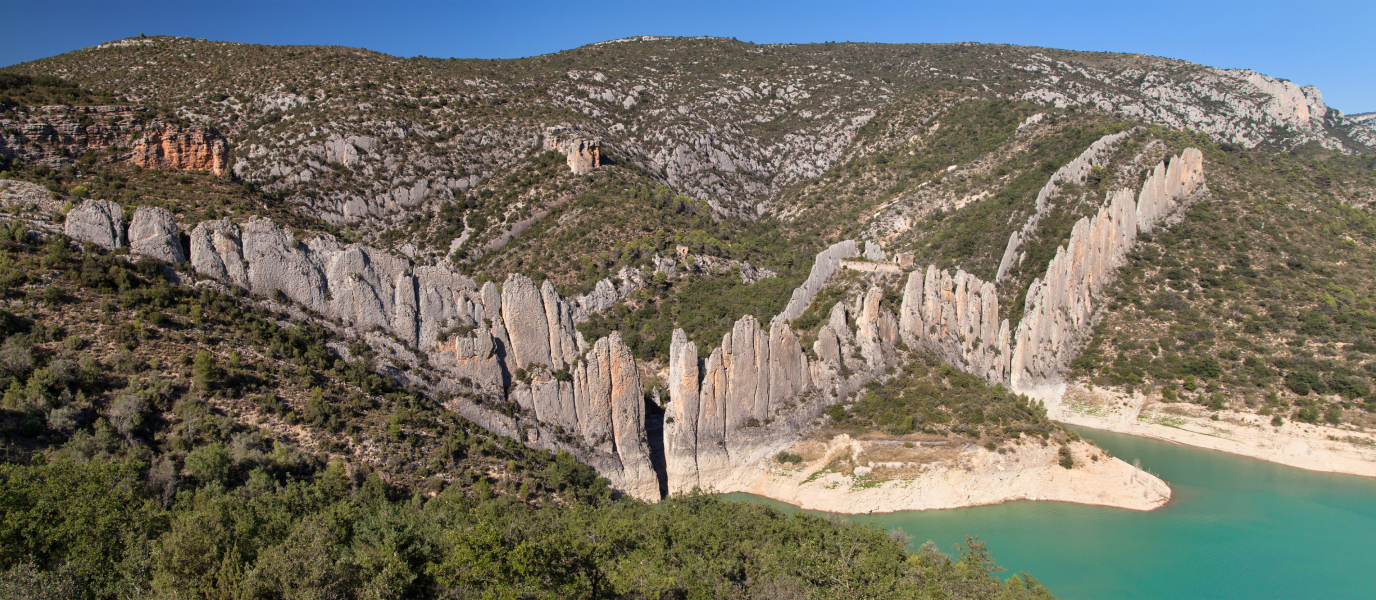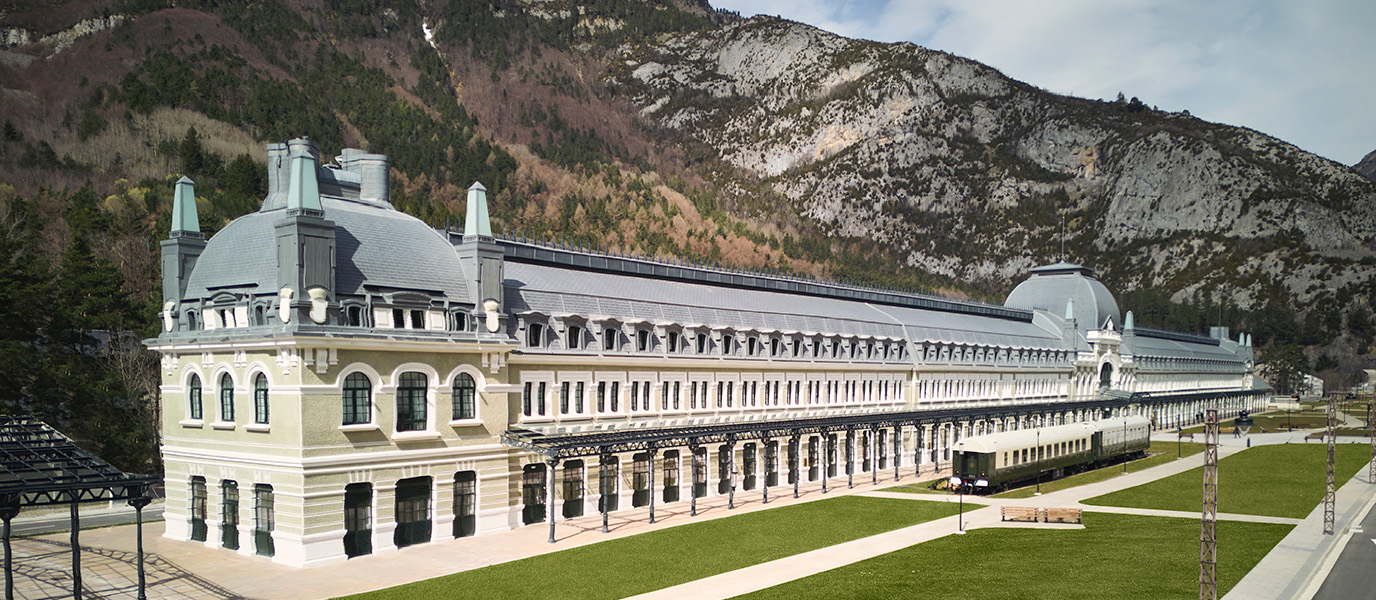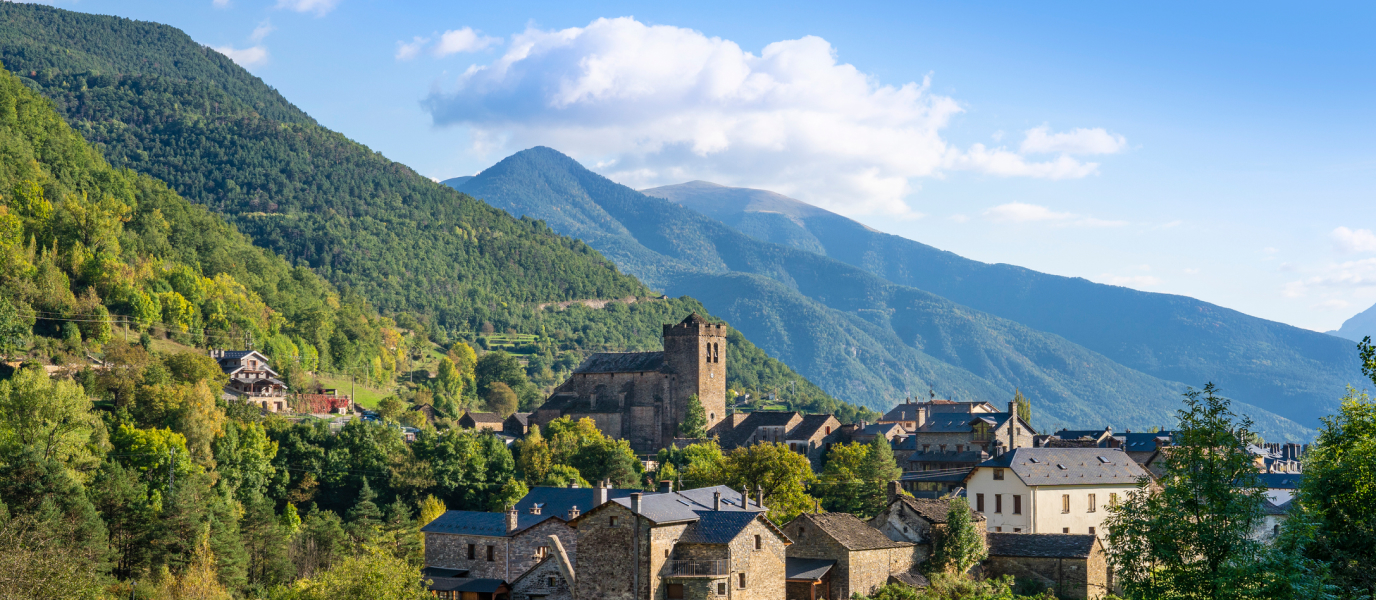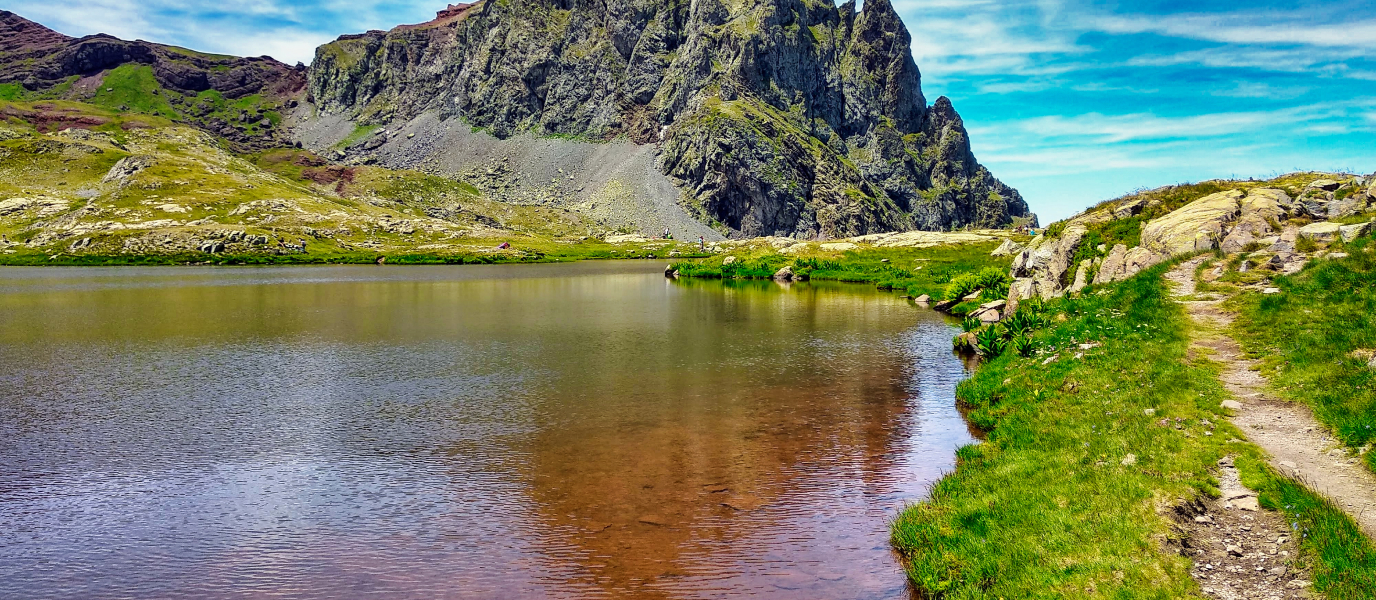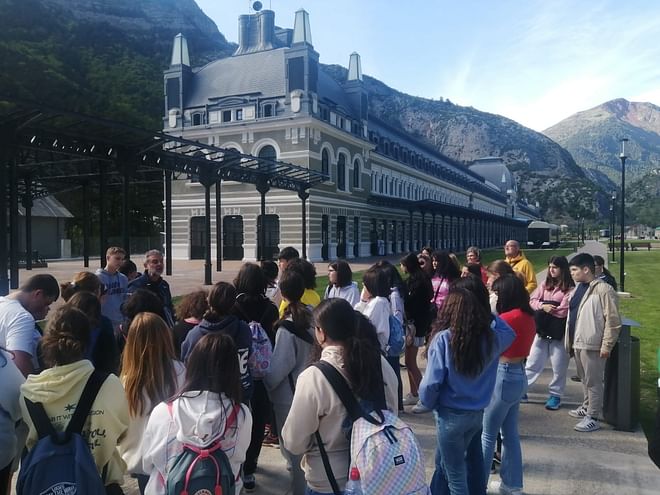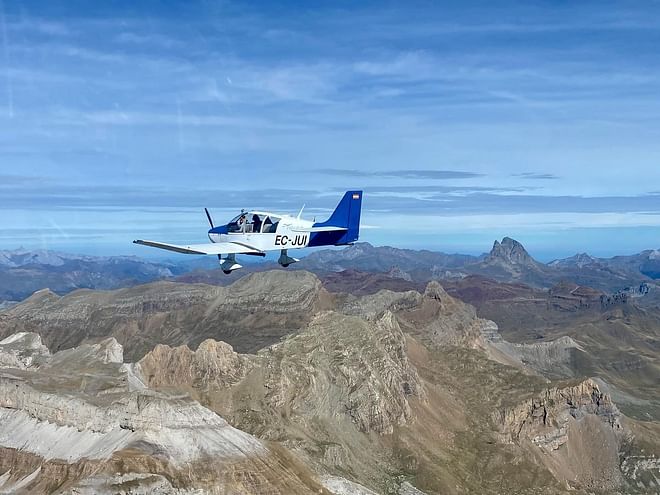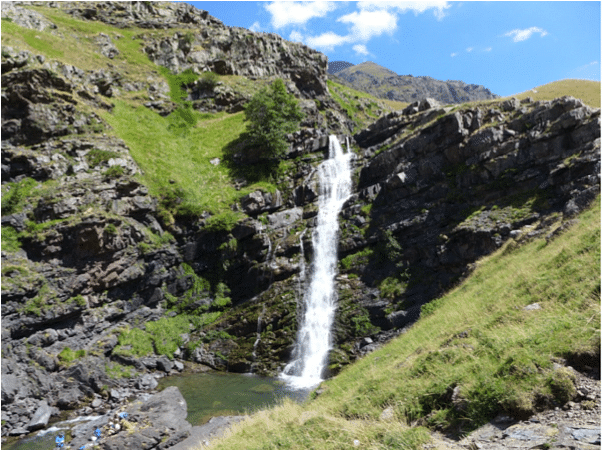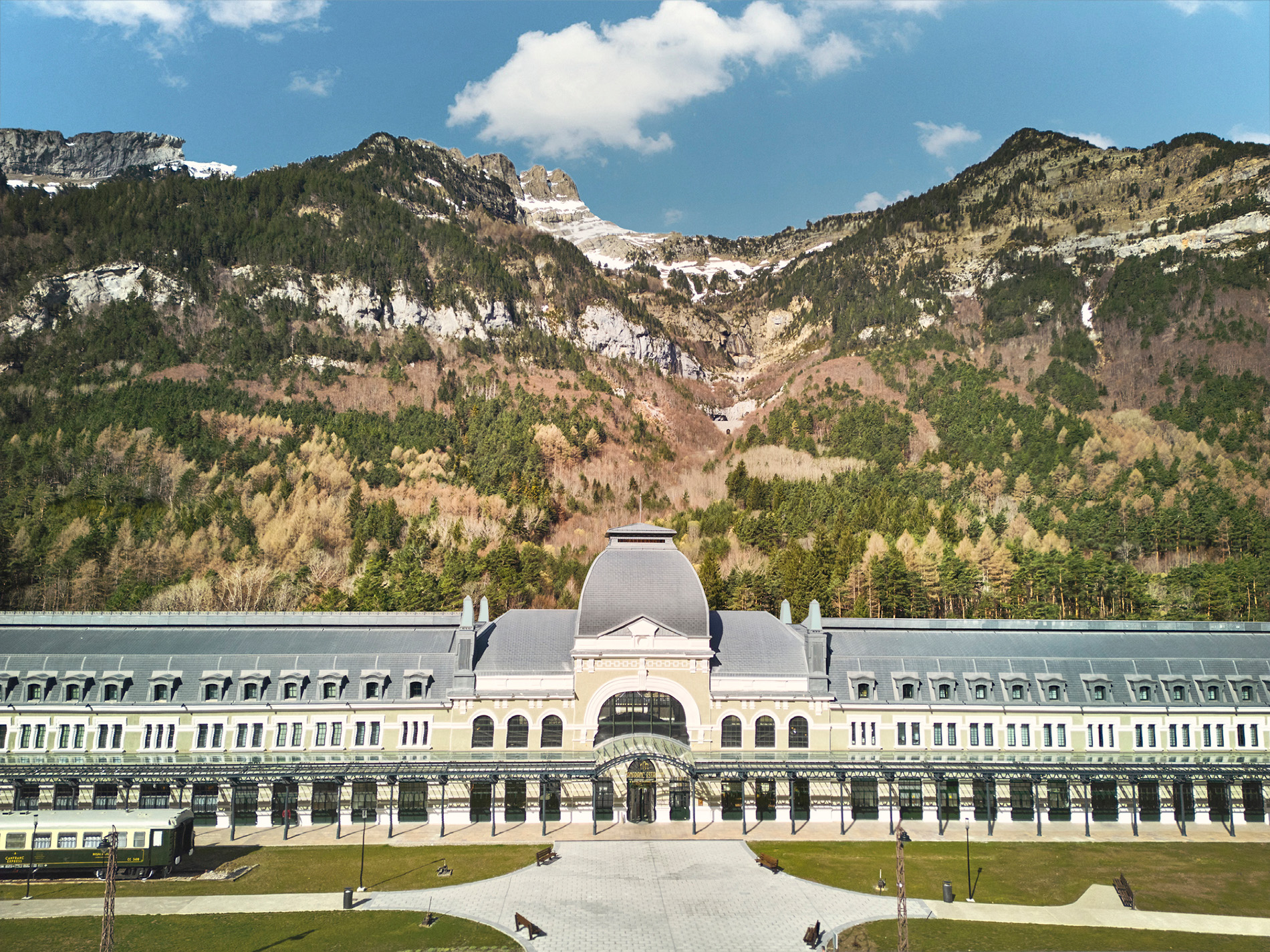Huesca has its own wall of China. However, far from being the result of manpower, it was Mother Nature herself who, throughout the ages, sculpted one of the most unusual geological ‘constructions’ in Aragon. This is the Wall of Finestres (or Finestras), an incredible and dramatic completely vertical calcareous formation which plunges into the Canelles reservoir and separates the Aragon slope of the Montsec sierra from the Catalan one.
Given the importance of this double barrier, as there is an internal channel between the two crests, it is no wonder that man has used the part within it to build defensive structures such as castles. Today, the nearby locality of Finestres is abandoned and all that remains are ruins, which makes the area more attractive. We explore this natural monument in the Huesca region of Ribagorza in order to discover its secrets.
Discover the spectacular Wall of Finestres
The Wall of Finestres is a geological formation made of limestone created in the Cretaceous period (around 100 million years ago). Tectonic movements caused the so-called layers that can be seen, albeit in a very different form to how they arose. This is because over millions of years erosion by the elements ended up sculpting the two stratum and the smooth parallel walls we see today. Although it is now known by the touristy name the Finestres Wall of China, the truth is its real name is Roques de la Vila.
The unusual formation of parallel rocks begins at the top of the hill where the abandoned settlement of Finestres is located and continues downwards to rise up with prominent crests. They then cross the reservoir in the deepest part of the river bed only to rise again on the next side and vanish into the hillside. In total, the rocky formation of the Wall of Finestres is about 840 metres long.
Of the two crests which run parallel, the south is the one with the highest walls, especially at the point at which it crosses the reservoir. It has a height which can surpass 20 metres. At precisely this point there is a convenient gap in the wall which enables the waters of the Canelles reservoir to pass to the other side of the rocks.
Finestres, town, castle and chapel</
The Finestres area was inhabited until 1960, although nowadays all that is left are the remains of its past as border country and its human activity. Throughout history, it was not remarkable for being an important settlement. Moreover, the creation of the reservoir at Canelles in the 1960´s meant the few inhabitants there were on borrowed time and, eventually, they had to leave the area.
However, today these ruins have a special charm. Located in the highest area of the western town which looks out onto the rocky formation are the remains of the Finestres settlement. A stroll around its quiet streets is to feel the bleak beauty of the so-called Deserted Spain. However, it is not entirely deserted. One of the houses, Cas Coix, is inhabited. Special features of the settlement include an eighteenth century chapel dedicated to St Mary, as well as the remains of an oil press, which means that one of the main industrial activities in the area was linked to olive growing.
On leaving the settlement, after about 350 metres you will come across the chapel of St Mark, a modest building which is open to the public. The most outstanding feature here is the Finestres Wall observation point. The place affords spectacular views of the unusual calcareous formation. It also has the added bonus of being a great place to have a picnic where the beauty of the area dominated by the crests can be admired as well as the emerald tones of the enormous reservoir of Canelles. From here one can make out the chapel of St Vincent located between both walls of stone and which was built on the remains of what in its day was Finestres Castle.
In order to arrive at the remains of the castle and chapel of St Vincent we must go back to the settlement and follow the signs to these places. The most interesting thing is we will pass between the Wall. We need to go down the hill between the two crests until we cross the point of the reservoir and go up again to reach the simple chapel. The Romanesque sanctuary, dated from between the eleventh and twelfth centuries, was built over the remains that were left standing of the Muslim fortress. This even used part of the wall of Finestres as a natural rocky wall to complete the construction. It is thus an archetypical example of the perfect symbiosis between natural and rural architecture. From the chapel only part of the vault remains standing which is located near the apse. From this point there are wonderful views of the settlement against the backdrop of the Canelles reservoir.
Canelles Reservoir
Today, the Canelles reservoir is the second largest reservoir in the Ebro basin, after the Mequineza one. It was built in 1960 and can hold up to 688 cubic hectometres. It acts as a natural frontier between the provinces of Huesca (Aragon) and Lleida (Catalonia).
One of the main attractions of the reservoir is to follow a route by kayak in the exact area where the Wall of Finestres is and you will be able to cross it in this fun boat. There are several adventure tourism companies such as Montesecactiva, Intrepidkayaks, Guías del Montsec or Sport Traveling, among others, which offer this exciting trip around the area by kayak. On average, the price for hiring the equipment and following the trail with a guide lasts around 4 hours and costs about 45 euros per head.
Itineraries and trails
The most common trail is that which leads from the Finestres settlement to the chapel of St Vincent via a path within the Wall of Finestres. Although it is relatively nearby (around a kilometre), it takes around half an hour to go from one point to another. Above all, the first stretch of the descent to reservoir level is very steep. It can be tough going, and so one should be very careful.
One interesting route option for discovering the attractions here is to tour the area until reaching Montañana, a Medieval settlement abandoned in the 1980’s and declared a Site of Cultural Interest and which is located around 30 kilometres from Finestres. To do so, we just need to go back to the N-230 which will take us to the turning (HU-941) for Montañana. The most remarkable things about this village are its cobbled streets, the majestic Roman bridge and the beautiful Romanesque church.
Useful information:
How to get there
- By car: The only way to get to Finestres from the city of Huesca is by car and one must take the A-22 dual carriageway up to junction 62 and then the N-240 towards Barbastro/Lleida. In Barbastro take the N-123 to the locality of Benabarre. From there, take the N-230 towards Lleida and after about 10 minutes follow the turning towards Estopiñán del Castillo. You need to be on the ball because when you see an abandoned mine on the left take the turning by a track until you come to Finestres.



























































